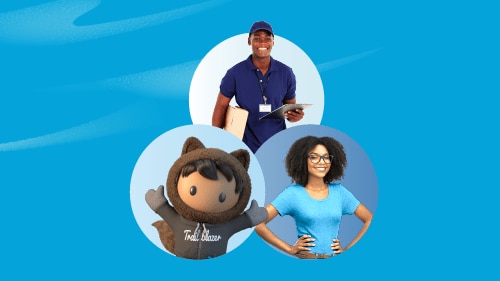As customer communities continue to evolve, companies are embracing the benefits they can bring beyond peer-to-peer support forums, such as product ideas and brand advocacy. When establishing a community as part of your digital customer service, it’s a given that you’ll hire staff dedicated to the day-to-day management. But don’t stop there. To maximize your customer community’s potential, look within your organization and tap into your most valuable resource: your employees. Think of them as your brand superheroes to boost customer adoption and engagement on your community platforms.
Follow this four-pronged approach to leverage your employees to develop a healthy population of internal contributors.
How to build a community by engaging employees
1. Identify the key internal roles important to your community
Encourage your employees to swoop in from any department and take on specialized roles in the customer community. These range from customer support to feedback and more.
- Product management employees can go beyond sharing best practices and delve into ways to maximize their products. In some cases, they help respond to product-detailed support questions and answer product roadmap questions (while maintaining confidentiality until new information is ready to be shared with the public). For communities that have idea management as part of their member engagement strategy, employees can play a huge role in the process.
- Service reps working with customers to resolve issues can use online communities as another element in the case-management toolbox. Access to a customer’s total company interactions paves the way to more personalized and efficient service and greater customer satisfaction. Employees may also use communities to support the Q&A section.
- Customer success outreach has opportunities in online communities as well. Employees can work one-on-one in collaboration with key customers via the success team and find opportunities to work one-to-many. An example of this is running a “success series” with content like webinars and blog posts.
Prioritize these internal roles before involving users across departments with a roadmap to roll out use cases. The plan you develop should reflect the types of engagement happening in the community (like support, product, or customer success).

Make participation easier by offering a diversity of commitment levels, such as virtual options in which employees can perform short, remote tasks ranging from comment moderation to greeting new community members.
2. Create a training or enablement plan
Because you’re engaging the customers in a public, social environment, your words are your biggest strength, and it’s not the same as emailing or talking one-on-one. Written communication with customers in an online community calls for a specific tone and style, especially when discussions are visible to the public and can be found in the future.
That’s why companies should develop standard online community guidelines:
- When to post: Some questions can be answered by other members of the community. Give it time before jumping in. In contrast, questions about a company role should be answered immediately.
- What to post: Use templatized approaches where it makes sense, such as with new product releases, webinars, or event announcements. This can make it easier for employees to create content — and it can be very effective. Establish a community rollout strategy to incorporate best practices.
- How to post: Communities are about people, so when answering a customer, keep it natural and conversational. Ensure all employees know the basics of excellent customer service by providing training on communication skills.
3. Line up executive sponsorship
Executive commitment is critical for the long-term success of your community. When executives step in, they signal to employees that the community is a worthy and important venture.
There are several ways executives can lead the way. First, they can support and celebrate all types of employee involvement, from full-time roles to employee volunteers. Executives can take community feedback seriously and deliberately, giving consideration to ideas that can fuel innovation, and absorb product feedback that can help improve existing products. They can also consider participating on a select, specified basis, such as writing a guest post or hosting an Ask Me Anything (AMA).
4. Make it fun to join
To rally employees and recognize their contributions, take a page from gaming and apps by making the experience rewarding.
- Internally share stories of employees involved in the community. Provide anecdotes of exemplary customer interactions and highlight the employees who participated. Invite employees to tell their own story of how and why they participate.
- Emphasize the value of participating. Well-attended customers are happy and more satisfied. They are also a source of good product feedback and ideas for improvement. Your employees can look at the community as a resource for recruiting beta customers and a place to build deeper relationships with customers. Customer communities are fertile ground for brand advocates who champion your brand without compensation.
- Provide triggers and calls to action. The power of the “@” mention is important; it’s a public way to engage employees. To do this right, ensure all employees have notifications on in order to be notified of any activity in the community.
- Measure and report. Reap those useful metrics and collect data on employee engagement. You might also take advantage of feedback opportunities by surveying the community.
- Celebrate all who join in. Every employee who participates is part of the secret sauce in your community, but give special recognition for top contributors or discussion leaders. You can launch a reward system or a recognition program to highlight employee milestones.
Creating a community that’s not just nurtured, but thriving, has many benefits. It creates a stronger connection with customers because providing this community shows them their input is valued. You empower those customers to help themselves. You’ll see better customer loyalty and retention when community members and your company have “shared purpose.” Another bonus: higher adoption levels of your products or services.
Learn how to expand your company’s reach with communities.




























